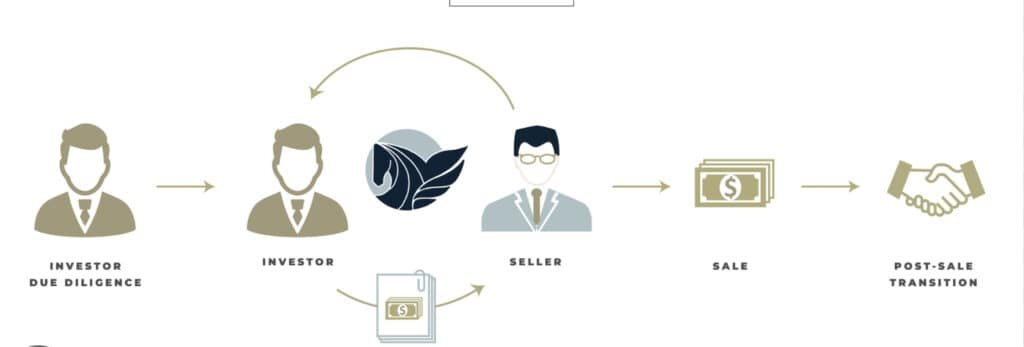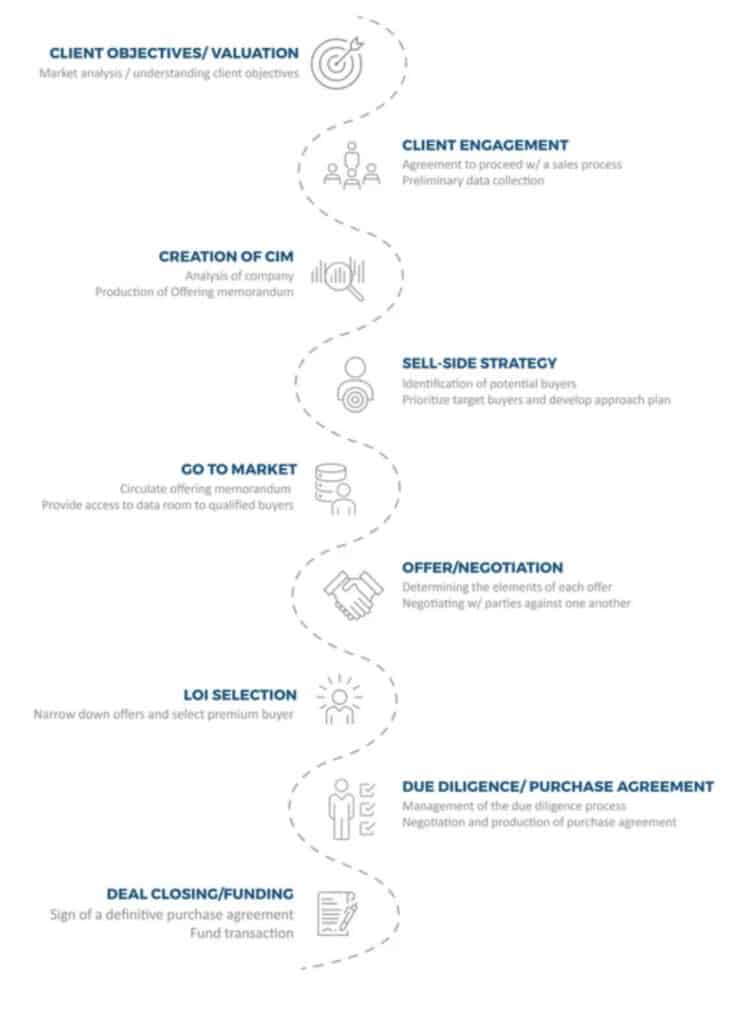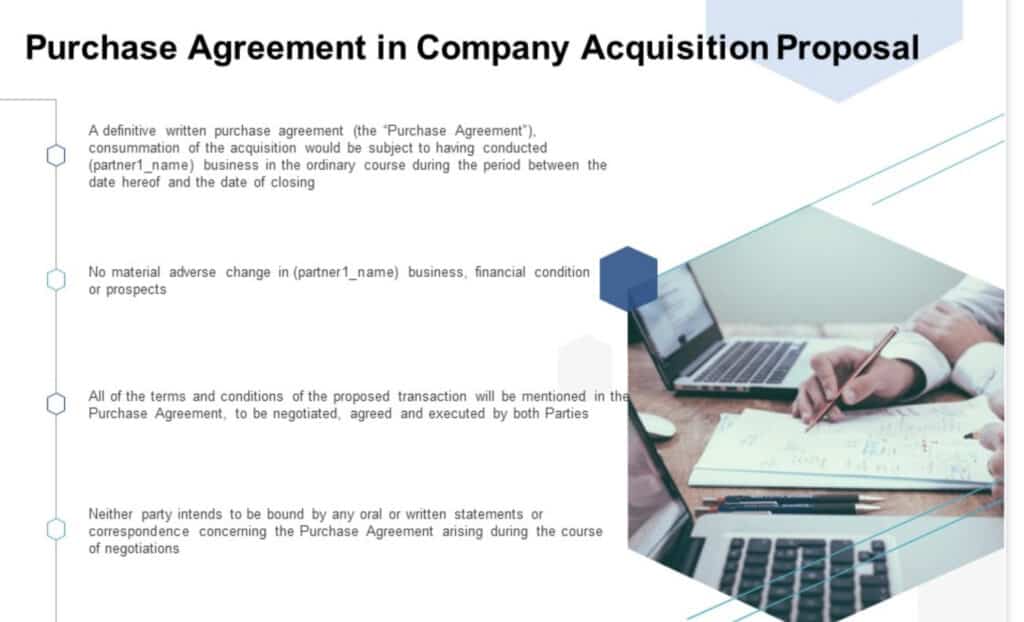Definitive Purchase Agreement: What is a Definitive Purchase Agreement?
A Definitive Purchase Agreement (DPA) is a legal document that captures the terms and conditions of a merger, acquisition, divestiture, joint venture, or other form of strategic alliance between two companies. It is a legally binding agreement between the buyer and seller that specifies the asset being purchased, the purchase price, representations and warranties, closing conditions, etc.
The Final Purchase Agreement supersedes all prior oral and written agreements and understandings between the customer and seller. Sometimes, a DPA is referred to as a “Stock Purchase Agreement” or a “Definitive Merger Agreement.”
Ordinary business contracts safeguard the interests of businesses. The protection of the interests of all parties involved in business transactions is facilitated by definitive agreements.
Included in definitive agreements are:
- Stock Purchase Contracts
- Purchase Membership Agreement
- Asset Purchase Contract

By having clear and enforceable contracts, both parties can be certain of their expectations and the consequences if contractual obligations are not met. Thus, well-written contracts help your business avoid future misunderstandings and conflict.
What do your contracts’ terms and conditions look like for Definitive Purchase Agreement?
Contracts aid in protecting both parties’ interests and ensuring clarity from the outset.
We can assist you in conducting your due diligence prior to concluding a contract. Due to the fact that every business is unique, both the buyer and vendor require legal counsel to ensure that all terms are clear and concise.
To protect your business interests, we evaluate every aspect of the sale on your behalf!
Having everything stated out in a contract ensures that both parties are aware of what to expect, eliminating any confusion or ambiguity that could lead to issues in the future.
Lawyers receive a great deal of animosity from bankers and financiers, but one fact is frequently overlooked amidst this animosity: in many instances, you will be professing to be a lawyer regardless of your actual title.
When an M&A transaction is about to close and both parties begin disseminating the Definitive Agreement, one of these situations occurs.
Comparison Table: Definitive Purchase Agreement vs. Letter of Intent
| Aspect | Definitive Purchase Agreement | Letter of Intent (LOI) |
|---|---|---|
| Purpose | Finalizes all aspects of the merger/acquisition | Shows commitment and outlines deal parameters |
| Legally Binding | Yes | Mostly non-binding, except for certain clauses |
| Commitment | Both parties are legally bound | Commitment to potential deal, but not binding |
| Importance | Final stage of the deal | Stepping stone to the definitive agreement |
| Detail Level | Fine points and specifics are outlined | General details and key terms discussed |
| Types | Stock Purchase Agreement and Asset Purchase Agreement | Various types based on the intent of the deal |
| Timeline | Near the end of the M&A process | Prior to the definitive agreement |
| Role in Due Diligence | Confirmation check on known facts | Allows due diligence and negotiation |
| Legal Consequences | Breaking the agreement leads to legal repercussions | Limited legal consequences |
| Real Estate Transactions | Similar principles to M&A process | Negotiating purchase of real estate properties |
| Document Length | Lengthy document, includes fine details | Generally shorter, outlines key aspects |
| Overall Importance in M&A | Most important document for finalizing the deal | Prototype document, sets foundation |
Comprehensive Purchase Contract

The possession of a company is transferred using a Definitive Purchase Agreement. The agreement also includes schedules or appendices that describe the inventory list, essential personnel, tangible assets, net working capital determination, etc.
What is a Binding Contract?
It is known by numerous other names, such as “stock purchase agreement” and “definitive merger agreement,” etc.
In each case, however, it does the same thing: it outlines the terms of the finalized transaction between the buyer and vendor.
In contrast to a “Letter of Intent” (LOI), a preliminary document prospective purchasers may send when considering the acquisition of a company, the Definitive Agreement is… definitive. Final. The conclusion.
The essential terms consist of:
The Buyer and Seller, Price (per share or in one total sum for private companies), and Transaction Type.
This section is straightforward for public companies: the price is always stated per share, with the precise number of shares and the treatment of dilutive securities detailed later.
However, there are a few potential terms worth noting in this section:
Exchange Ratios and Collars –
In the real world, the majority of stock-based transactions are based on fixed or a(e.g., the seller receives X shares of the buyer for each of its own shares). Collars enable both parties to hedge the risk of declining or rising stock prices by adjusting the exchange ratios based on the buyer’s price.
Earn-Outs – Does the buyer only pay the seller a portion of the purchase price if certain milestones, such as specific revenue and EBITDA figures, are reached in the years following the conclusion of the transaction?
These two factors make it more difficult to provide an exact “price” for the transaction; if either of them applies, you must clarify it when summarizing the terms.
Outstanding Shares, Options, RSUs, and Other Dilutive Securities:
In some transactions, vested, exercisable options are “cashed out” (e.g., if the strike price is $8.00 and the per-share purchase price is $10.00, option holders receive the difference) and unvested options are converted into options for the buyer’s stock…
However, this is not always the case, and you must thoroughly review the treatment of other dilutive securities because it affects the effective purchase price.
Declarations and Guarantees:
In this section, both parties must state certain facts (“representations” or “reps”) and then “warrant” that each one is accurate.
This is almost always more extensive for the vendor, who must comply with taxes, regulations, intellectual property laws, internal accounting controls, contracts, etc.
This section typically contains a statement from the vendor regarding the financing of the transaction, e.g., if they need to issue debt to complete the transaction, they may discuss the commitment letters received from lenders.

This section is comparable to the covenants when a company raises debt; they may be positive (you MUST do this) or negative (you CANNOT do this).
Covenants:
Similar to debt covenants, the vendor may be prohibited from spending more than a specified amount on CapEx, selling assets, issuing stock or debt, etc.
This section prevents the seller from “looting” itself prior to being acquired; no buyer wants to pay billions of dollars for a company only to discover that the seller sold off all of its assets and raised a massive amount of debt just before the deal closed.
Solicitation (“No Shop” as opposed to “Go Shop”):
Obviously, a buyer wants to avoid being outbid by other potential acquirers; therefore, it is in their best interest to include a “no shop” clause that prohibits the company from considering alternative offers.
However, public vendors must consider all unsolicited offers due to fiduciary responsibilities. This is referred to as a “window shop,” and it is sometimes included in the contract for private sellers as well.
A “Go Shop” clause, on the other hand, allows the vendor to actively solicit bids from other buyers; this term may be used as a compromise if the seller does not receive the price it desires.
Sometimes, it’s also used to reduce the risk of potential lawsuits if there wasn’t a genuine “market check” before the transaction was announced – if this clause exists, the seller can say, “We spent time soliciting bids, but no one offered a higher price for the company. This is the greatest price we were able to negotiate.”
There is typically a 30-to-60-day time limit to prevent sellers from auctioning themselves off forever.
Financing

This section is most important if debt is involved; the buyer must explain where the financing is coming from if it’s not cash on hand or stock issuance.
Fee for Termination (or “Break-Up Fee”)
This clause is intended to penalize the seller if the transaction falls through or, more commonly, if the seller rejects the initial offer and accepts a competing bid.
This is typically between 2% and 4% of the Equity Purchase Price (4% would be more aggressive), but it’s almost always specified as a lump-sum dollar amount in the agreement, so you’ll need to do the math to determine the percentage.
These fees are more prevalent with public sellers, where competing bids can arise more readily, than with private sellers.
Indemnification:
What occurs if the seller concealed or failed to disclose a substantial liability? The vendor pays a substantial fee.
This clause is uncommon for public vendors, but quite common for private sellers. A portion of the purchase price may be deposited into an escrow account and then released once the buyer has confirmed that the seller has not engaged in any illegal activity.
Then there are “baskets” and “caps” that limit the seller’s liability; for instance, if the basket is $100,000 and the cap is $10 million, the buyer can only make a claim if it is worth more than $100,000, but it cannot seek more than $10 million in damages.
Clauses for Materially Adverse Change (MAC) and Materially Adverse Effect (MAE):
These clauses provide the vendor with a “out” if something catastrophic occurs between the signing and closing of the contract.
As you might expect, “something catastrophic” is subject to interpretation, and these clauses are written in vastly different language in various contracts.
For a long time, these portions were almost an afterthought, but during the financial crisis, buyers began to interpret “material adverse change” as “economy/stock market crashing and banks failing.”
Exclusions to these clauses are written into the agreement to prevent buyers from withdrawing if the company misses its projections, an employee leaves, or there is a general industry downturn (these differ greatly depending on the deal).
Closing Requirements:
This section summarizes the conditions that must be met for the transaction to close; it is primarily a summary of the previous sections.
In the United States, references to the HSR Act can be found in nearly all M&A transactions (deals of a certain magnitude must be approved by regulators).
What Does NOT Come with the Agreement?:
Arguably more intriguing than what IS included in the Definitive Agreement is what IS NOT included:
Complete financial projections or models for the companies.
Any information regarding potential revenue or cost synergies or dis-synergies, anticipated restructuring costs, etc.
The end result of a Fairness Opinion.
The exact quantity of cash, stock, and debt utilized (at least for public sellers), as well as the terms of the debt.
The intention is to keep the agreement focused on “the facts,” as opposed to prospective performance speculation.

Types of Binding Purchase Contracts:
There are two varieties of purchase contracts:
1 Stock Purchase Contract
By means of a Share Purchase Agreement, the vendor transfers the entity’s shares into the buyer’s name. Therefore, the purchaser now possesses the assets and liabilities previously held by the selling entity. This transaction type is also known as a “Stock Sale.”
2 Asset Acquisition Agreement
In an Asset Purchase Agreement, individual assets rather than the entire company are transferred from the vendor to the buyer. The vendor retains ownership of the entity, while the buyer merges the assets into his existing company or incorporates them into a new company.
Clauses in a Binding Purchase Contract:
1 Definitions of Important Terms
The agreement will define the terms and their meanings utilized throughout the document. It will explain how the buyer and vendor are referred to in the document, the significance of the closing date, the availability of sufficient working capital, etc.
2 Acquisition Consideration
The purchase consideration is the total amount that the buyer is obligated to pay the vendor. In addition, it discusses any necessary adjustments to the purchase price. It specifies the earnest money that is deposited in the escrow account, earn-outs, third-party financing, required working capital at the time of closure, etc., and provides a complete breakdown of the payment schedule following the closing date.
3 Guarantees and representations
In this section, both the buyer and vendor must make “representations” and “warrant” that the statements are accurate. Also known as “Reps and Warranties,” this is one of the most essential and lengthy sections of the agreement, and it is heavily negotiated.
The objective of the buyer is to obtain exhaustive representations and warranties, as they provide valuable information about what the buyer is paying for. On the other hand, the objective of the vendor is to restrict reps and warranties.
The vendor is in compliance with government regulations, the Worker’s Compensation Act, intellectual property laws, and has the legal authority to sign the agreement, etc., is a typical warranty.
Representations and Warranties:
The seller may limit its reps and warranties, however, by embracing the following:
Duration –
It may make a representation or warranty until a certain time, after which it will not be responsible for any occurrence.
Materiality –

It qualifies a representation or warranty by defining what is material and what could have a materially adverse effect.
Limiting the scope to what was provided in the virtual data room during the transaction process is an option.
Disclosure Schedules – It may also limit warranties and representations based on the information provided in the disclosure schedules.
This section addresses the possibility of the seller seeking out additional customers. A number of commonly used phrases are included in the agreement so as to convey their true meaning to both parties.
No-Shop Clause – This clause prohibits the vendor from pursuing additional buyers. This clause is advantageous to the buyer because he or she does not need to stress about being outbid by other potential acquirers.
This clause permits the vendor to actively seek out bids that are more favorable than the current one. This clause may be utilized when the seller is unable to obtain the intended price. The inclusion of this clause is undesirable from the perspective of the client.
Indemnification Provisions
Although the representations and warranties form the basis of the definitive purchase agreement, the indemnification clauses lend it strength. With this clause in place, the vendor must pay a hefty fee if he or she has failed to disclose a liability or has covered it up. The following indemnification clauses are frequently negotiated:
Sandbagging Clause – This clause is favorable to the buyer because it permits the buyer to file an indemnity claim based on breaches even if they were known prior to the closing. The vendor attempts to limit the buyer’s remedies on the basis of prior knowledge of an error or breach.
Continuity – An indemnification clause is not permanent. This provision stipulates an expiration date for indemnification claims made under the section on representatives and warranties. The duration of survival varies between 12 and 24 months.
Type of Damages – Parties negotiate extensively the types of damages that can be recovered under the definition of “Damages” or “Losses.” The buyer by default would like this clause to be as broad as possible and will want to include punitive damages, whereas the seller would want to explicitly exclude punitive, consequential, and similar damages, and may also look to exclude diminution in value damages.
Baskets & Deductibles – Baskets and deductibles are clauses that are intended to assure the vendor that he or she will not be liable for insignificant claims.

In the case of baskets, the seller is responsible for the buyer’s entire loss only if it exceeds the amount agreed upon in the basket. For instance, if the basket is worth $100,000 and the buyer’s loss is $70,000, the vendor is not required to compensate the buyer. In contrast, if the buyer’s total loss is $120,000, the vendor must cover the entire amount.
In the case of deductible provisions, the seller is only responsible for the amount of loss in excess of the deductible. Typically, both of these clauses are incorporated into the agreement.
Cap – Enables the setting of an utmost limit on the seller’s indemnification duty. It can be specified as a percentage of the transaction amount or a fixed dollar amount. In an ideal situation, the seller would prefer a cap and would prefer that it be as low as feasible, whereas the buyer would not prefer a cap or will negotiate to increase the size of the cap.
Closing Requirements
As regulatory approval is typically required, there is typically a delay between the signing of the agreement and the closing of the transaction. With such a time lag, there are conditions that must be met by both parties for the transaction to close successfully. The other party is not required to complete the transaction if certain conditions are not met.
Popular closing conditions in a Definitive Purchase Agreement include the following:
Buyer should request that representations and warranties are accurate as of the signature date and closing date.
As not all reps can be standardized, buyer and vendor can also negotiate the accuracy requirements for reps and warranties.
Material Adverse Effect is a factor that determines whether or not the closing conditions have been satisfied.
Miscellaneous Provisions
In addition to the above-mentioned significant provisions, the following provisions must also be considered:
Inventory – This section describes the inventory the vendor must have at the time of closing, as well as the valuation adjustments that may be necessary in the event of any changes. As annexures, a comprehensive description of the inventory is also included.
Resolution of Disputes – If there is a dispute between the parties, they should attempt to resolve it through discussion. In the event that they are unable to do so, the applicable laws will govern the agreement.
Termination Fees – This clause is inserted to penalize the vendor or buyer if the transaction falls through due to a last-minute change of heart. It is typically between 2% and 3% of the Enterprise Value.
Finder’s Fees – It is specified who pays the fees to the financier designated for the transaction. Typically, each party pays a fee to the advisor they’ve chosen.
Annexures to the Definitive Purchase Agreement include the Key Employee Agreement, Fixed Assets, Escrow Agreement, IP Agreement, and Net Working Capital Determination Methodology, among others.
Here are some items that are excluded from the agreement:
- The company’s anticipated development in the future and its projections
- The precise parameters of the buyer’s debt financing.
- Potential cost savings and revenue gains
- Financial model and expenditure commitment
- Relevant reading
Thank you for perusing the definitive purchase agreement guide by Tahmidur Rahman. See the following Tahmidur Rahman resources to learn more about mergers and acquisitions:
Contract Agreement & Breach of Contract in Bangladesh Services By TRW Barristers and law firm in Bangladesh
At TRW Barristers in Bangladesh, as the leading law firm in Dhaka, we also already supported our clients in securing the full compensation for a broken contract by means of out – of-court settlement or litigation. We will inform our clients with full clarity on the steps that need to be taken to minimize the damage caused by the breach and also enable them to obtain the best possible solution in the event of damage that has already been sustained in Contract Agreement & Breach of Contract in Bangladesh.
GLOBAL OFFICES:
DHAKA: House 410, ROAD 29, Mohakhali DOHS
DUBAI: Rolex Building, L-12 Sheikh Zayed Road
LONDON: 1156, St Giles Avenue, 330 High Holborn, London, WC1V 7QH
Email Addresses:
info@trfirm.com
info@tahmidur.com
info@tahmidurrahman.com
24/7 Contact Numbers, Even During Holidays:
+8801708000660
+8801847220062
+8801708080817
